 |
 |
|
 |
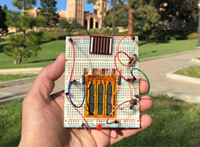 , a low-cost energy alternative and high-efficiency energy storage material. This technology could introduce a new generation of high-performance electric vehicles and portable electronics, as well as improve devices like biomedical implants and embedded microsensors. , a low-cost energy alternative and high-efficiency energy storage material. This technology could introduce a new generation of high-performance electric vehicles and portable electronics, as well as improve devices like biomedical implants and embedded microsensors. |
 |
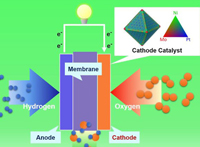 Made from a compound of three metals - platinum, nickel, and molybdenum - the nanostructures could be used for eco-friendly automobiles and other clean-energy applications. Made from a compound of three metals - platinum, nickel, and molybdenum - the nanostructures could be used for eco-friendly automobiles and other clean-energy applications. |
 |
| The new technology is capable of storing solar energy for up to several weeks — an advance that could change the way scientists think about designing solar cells. |
 |
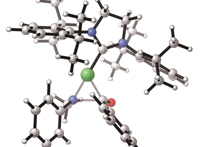 Although enzymes are able to cleave amide bonds in nature, it is difficult to selectively break the carbon–nitrogen bond of an amide using synthetic chemistry. The team demonstrates that amide C–N bonds can be activated and cleaved using nickel catalysts. Although enzymes are able to cleave amide bonds in nature, it is difficult to selectively break the carbon–nitrogen bond of an amide using synthetic chemistry. The team demonstrates that amide C–N bonds can be activated and cleaved using nickel catalysts. |
 |
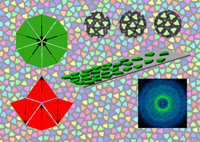 They have created the first experimental realization of a colloidal glass in which the shape of the constituent particles has been designed to cause highly diverse local polymorphism, which in turn leads to geometrical frustration and the suppression of crystallization even when the colloidal particles are compressed very slowly. They have created the first experimental realization of a colloidal glass in which the shape of the constituent particles has been designed to cause highly diverse local polymorphism, which in turn leads to geometrical frustration and the suppression of crystallization even when the colloidal particles are compressed very slowly. |
 |
| Protein aggregates associated with neuro-degenerative disease have stubbornly resisted researchers' efforts to get a good look at them. They refuse to crystallize well or yield to standard spectroscopic techniques. Now, advances in electron microscopy methods are forcing these molecules to give up their secrets. |
 |
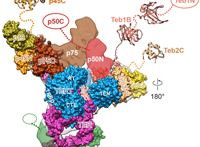 Their findings could ultimately lead to new directions for treating cancer and preventing premature aging. Their findings could ultimately lead to new directions for treating cancer and preventing premature aging. |
 |
|
 |
|
 |

 Professor Ric Kaner develops graphene-based super capacitors, a low-cost energy alternative and high-efficiency energy storage material. This technology could introduce a new generation of high-performance electric vehicles and portable electronics, as well as improve devices like biomedical implants and embedded microsensors.
Professor Ric Kaner develops graphene-based super capacitors, a low-cost energy alternative and high-efficiency energy storage material. This technology could introduce a new generation of high-performance electric vehicles and portable electronics, as well as improve devices like biomedical implants and embedded microsensors. Professor Xiangfeng Duan's research team's nanostructure research leads to the development of nanostructures that increase the efficiency and durability of fuel cells. Made from a compound of three metals - platinum, nickel, and molybdenum - the nanostructures could be used for eco-friendly automobiles and other clean-energy applications.
Professor Xiangfeng Duan's research team's nanostructure research leads to the development of nanostructures that increase the efficiency and durability of fuel cells. Made from a compound of three metals - platinum, nickel, and molybdenum - the nanostructures could be used for eco-friendly automobiles and other clean-energy applications. 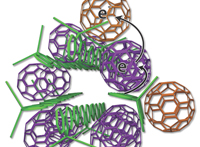 Professors Sarah Tolbert, Ben Schwartz, and Yves Rubin devise technology that could transform solar energy storage. The new technology is capable of storing solar energy for up to several weeks — an advance that could change the way scientists think about designing solar cells.
Professors Sarah Tolbert, Ben Schwartz, and Yves Rubin devise technology that could transform solar energy storage. The new technology is capable of storing solar energy for up to several weeks — an advance that could change the way scientists think about designing solar cells. Research team led by Professors Ken Houk and Neil Garg develop a nickel-catalyzed method for cleaving and modifying the normally unreactive functional group. Although enzymes are able to cleave amide bonds in nature, it is difficult to selectively break the carbon–nitrogen bond of an amide using synthetic chemistry. The team demonstrates that amide C–N bonds can be activated and cleaved using nickel catalysts.
Research team led by Professors Ken Houk and Neil Garg develop a nickel-catalyzed method for cleaving and modifying the normally unreactive functional group. Although enzymes are able to cleave amide bonds in nature, it is difficult to selectively break the carbon–nitrogen bond of an amide using synthetic chemistry. The team demonstrates that amide C–N bonds can be activated and cleaved using nickel catalysts.  Professor Thomas Mason and research team's experiments have revealed a new mechanism for glass formation. They have created the first experimental realization of a colloidal glass in which the shape of the constituent particles has been designed to cause highly diverse local polymorphism, which in turn leads to geometrical frustration and the suppression of crystallization even when the colloidal particles are compressed very slowly.
Professor Thomas Mason and research team's experiments have revealed a new mechanism for glass formation. They have created the first experimental realization of a colloidal glass in which the shape of the constituent particles has been designed to cause highly diverse local polymorphism, which in turn leads to geometrical frustration and the suppression of crystallization even when the colloidal particles are compressed very slowly. 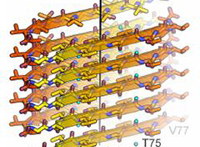 Professor David Eisenberg and team offer closest look yet at core of α-synuclein aggregates. Protein aggregates associated with neuro-degenerative disease have stubbornly resisted researchers' efforts to get a good look at them. They refuse to crystallize well or yield to standard spectroscopic techniques. Now, advances in electron microscopy methods are forcing these molecules to give up their secrets.
Professor David Eisenberg and team offer closest look yet at core of α-synuclein aggregates. Protein aggregates associated with neuro-degenerative disease have stubbornly resisted researchers' efforts to get a good look at them. They refuse to crystallize well or yield to standard spectroscopic techniques. Now, advances in electron microscopy methods are forcing these molecules to give up their secrets.  Professor Juli Feigon's research team has produced images of telomerase in much higher resolution than ever before, giving them major new insights about the enzyme. Their findings could ultimately lead to new directions for treating cancer and preventing premature aging.
Professor Juli Feigon's research team has produced images of telomerase in much higher resolution than ever before, giving them major new insights about the enzyme. Their findings could ultimately lead to new directions for treating cancer and preventing premature aging.